Plan your Japan trip without
the overwhelm
Best Kyoto Temples for Autumn Leaves: Kiyomizu-dera, Tofuku-ji, Eikan-do

Japan in autumn is a visual masterpiece. As red, orange, and gold sweep through the landscape, Kyoto becomes one of the most iconic places to witness this seasonal beauty. Some of the best spots to enjoy the autumn foliage are temples—where nature, history, and spirituality blend into a peaceful, unforgettable experience.
Here are three must-visit temples in Kyoto during the fall season: Kiyomizu-dera, Tofuku-ji, and Eikan-do.
Kiyomizu-dera: Views Over a Sea of Color
Set on a hillside, Kiyomizu-dera offers one of Kyoto’s most breathtaking panoramic views. The temple’s massive wooden terrace looks out over a forest of maple trees that ignite in red and orange during autumn.
What makes it magical in autumn?
Sweeping Views: The elevated deck gives a wide-angle view of Kyoto surrounded by fall colors.
Evening Illuminations: In November, the temple lights up the foliage for a dreamy nighttime experience.
Historic Architecture: The wooden terrace is built without nails, a marvel in itself.
Tips for visiting:
Best Time: Mid to late November
Access: Bus or taxi to Kiyomizu-michi, then walk up the hill
Tofuku-ji: Kyoto’s Sea of Red
Tofuku-ji is famous for its thousands of maple trees that turn a fiery red in autumn. The temple’s Tsutenkyo Bridge is the highlight, offering a spectacular view over the maple valley.
Why go in autumn?
The Bridge View: Tsutenkyo gives a bird’s-eye view of the blazing forest below.
Tranquil Gardens: Tofuku-ji’s rock and moss gardens are a peaceful contrast to the vivid foliage.
Historic Vibes: One of Kyoto’s oldest temples, dating back to the 13th century.
Tips for visiting:
Best Time: Mid to late November
Access: JR Nara Line to Tofukuji Station, then a short walk
Eikan-do: Reflections of Autumn Gold
Eikan-do is one of Kyoto’s most photogenic fall spots. Its pond reflects red and golden leaves, while the surrounding wooden buildings and statues create a peaceful, spiritual vibe.
What makes Eikan-do unique?
The Pond: The reflections here feel like a painting—calm and luminous.
Mikaeri Amida: A rare statue of Buddha looking over his shoulder, symbolic and spiritual.
Evening Lights: Like Kiyomizu-dera, Eikan-do has beautiful illuminations in the evening.
Tips for visiting:
Best Time: Mid-November to early December
Access: Bus or taxi to Nanzen-ji Eikando-michi, then short walk
Planning Your Visit: Quick Tips
Avoid Peak Hours: Go early or late in the day for fewer crowds and better lighting.
Check Illumination Schedules: Most events happen in November.
Wear Layers: Days can be warm, mornings and evenings cold.
Be Respectful: These are active places of worship.
FAQ
When is peak autumn in Kyoto?
Usually from mid to late November.
Do these temples charge entry fees?
Yes, between 300 and 600 yen per temple.
Can I take photos?
Yes, but some indoor areas may prohibit photography.
How crowded are these places?
They get busy, especially Kiyomizu-dera. Try to go early.
Do all temples have light-up events?
No, check each temple’s website or local listings.
What’s the best way to visit them all?
Public transport works well. Consider a day bus pass for flexibility.
💼 Why Choose My Ready-to-Go Itineraries?
Planning a Japan trip can get overwhelming. I lived in Japan and built the kind of guide I wish I had at the beginning. Here’s what you get:
✅ Clear day-by-day routes 100% customizable
✅ Local spots, not just the touristy ones
✅ Interactive map & Direct Google Maps links
✅ Tips on transport, food, and stays
✅ Works offline. Saves you 100+ hours of research
💌 Get Your Japan Itinerary Now Travel Japan with clarity. No stress. No chaos. Just the adventure, made easy.

Marie creator behind @Tabimawari
Hi, I’m Marie.
French islander from Reunion island, Japan lover, and travel planner behind Tabimawari.
I spent a year living in Kyoto, learning Japanese and falling in love with the culture. Since then, I’ve kept going back, exploring every corner from Tokyo to the tiniest hidden towns.
I created these guides after spending months planning, testing, and fine-tuning every detail so you don’t have to. Inside, you’ll find:
✅ Interactive maps
✅ Step-by-step directions
✅ Local spots + travel tips
✅ Offline use
Each guide is made with care, based on real-life travel, not generic blog advice.
This is what I wish I had on my first trip to Japan and now it’s yours.
MY SOCIALS
MY NEWSLETTER
Japan Monthly by Tabimawari : Subscribe to get a monthly email packed with inspiration, local tips, and events happening across Japan straight from someone who’s lived and traveled a lot.

Marie creator behind @Tabimawari
Hi, I’m Marie.
French islander from Reunion island, Japan lover, and travel planner behind Tabimawari.
I spent a year living in Kyoto, learning Japanese and falling in love with the culture. Since then, I’ve kept going back, exploring every corner from Tokyo to the tiniest hidden towns.
I created these guides after spending months planning, testing, and fine-tuning every detail so you don’t have to. Inside, you’ll find:
✅ Interactive maps
✅ Step-by-step directions
✅ Local spots + travel tips
✅ Offline use
Each guide is made with care, based on real-life travel, not generic blog advice.
This is what I wish I had on my first trip to Japan and now it’s yours.
MY SOCIALS
MY NEWSLETTER

Plan your Japan trip without
the overwhelm
Follow me
Newsletter
Japan Monthly : Subscribe to get a monthly email packed with inspiration, local tips, and events happening across Japan straight from someone who’s lived and traveled a lot.


